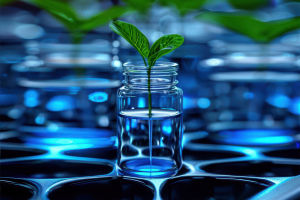Maple syrup is a natural treasure deeply connected to Canadian culture and springtime traditions. Every year, as the cold winter melts away, we look forward to the rich, golden syrup made from maple tree sap — a sweet delight that’s both delicious and packed with natural minerals.
While the traditional process requires tapping sugar maple trees, today we’ll guide you through how we can make real maple syrup at home, using pure maple sap or concentrate, with simple steps that bring the taste of Canada to your kitchen.
What Exactly Is Maple Syrup?
Maple syrup is made by boiling down the watery sap that flows inside sugar maple trees. This sap is mostly water with a small amount of natural sugar, usually around 3.5%. To make just one liter of syrup, it takes about 30 to 45 liters of sap, which means a lot of boiling and evaporating!
The syrup has a unique sweet flavor and contains minerals like calcium, potassium, and magnesium, making it a tasty and natural alternative to refined sugar. It’s popular not only for its taste but also because it’s pure and minimally processed.
Ingredients and Tools We Need for Home-Made Maple Syrup
To try making maple syrup at home, here’s what we’ll need:
- About 4 liters of pure maple sap or maple sap concentrate (if using concentrate, dilute as instructed on the package)
- A large stainless steel pot or wide, shallow pan for boiling
- A kitchen thermometer (preferably one that measures up to 110°C or 230°F)
- A wooden spoon or heat-resistant spatula for stirring
- A fine mesh strainer or cheesecloth to filter impurities
- Clean glass bottles or jars with airtight lids for storage
These simple tools will help us turn watery sap into thick, sweet syrup.
Step 1: Preparing the Sap
If we have fresh pure maple sap, it’s ready to boil. If we use sap concentrate, it needs to be diluted with clean water according to the instructions — usually 4 parts water to 1 part concentrate — to resemble natural sap consistency.
Pour the sap into the large pot, making sure there’s enough surface area to let the liquid evaporate evenly.
Step 2: Bring the Sap to a Boil
Set the pot on the stove or heat source and start heating the sap slowly until it reaches a gentle boil.
It’s important to watch the temperature with our thermometer. Water boils at 100°C (212°F), but maple syrup finishes boiling at about 104°C (219°F), roughly 7°C above water’s boiling point.
As the sap boils, water evaporates, and the liquid thickens.
Step 3: Slow Boiling and Stirring
We need patience here. Keep the sap boiling gently, stirring occasionally to prevent it from burning on the bottom.
As the liquid reduces, it becomes sweeter and thicker. We check the temperature often, because once it reaches about 104°C, it’s ready — thick enough to be syrup.
This process can take a few hours depending on the volume and heat intensity.
Step 4: Filtering the Syrup
Once the sap reaches the right temperature, remove the pot from heat.
To get a smooth syrup without foam or impurities, pour the hot syrup through a fine mesh strainer or cheesecloth into a clean container.
This filtering step is key to making a clear, high-quality syrup.
Step 5: Bottling and Storing
While the syrup is still warm, pour it carefully into sterilized glass bottles or jars.
Seal the containers tightly to keep the syrup fresh.
Store your homemade maple syrup in the refrigerator, where it can keep well for several months.
Extra Tips for Making the Best Maple Syrup at Home
- Use a wide pot or pan with a large surface area for faster evaporation.
- Boil the sap in a well-ventilated kitchen or even outdoors if possible, because it creates a lot of steam and a sweet aroma.
- Avoid rushing — slow boiling brings out the best flavor and color.
- Always use “100% pure” maple sap or concentrate for authentic taste.
- If you want to test syrup thickness without a thermometer, dip a cold spoon in the syrup — if it coats the spoon and drips slowly, it’s ready.
How We Can Enjoy Our Homemade Maple Syrup
Now that we’ve made our own maple syrup, the fun part is enjoying it! Pour it over pancakes, waffles, or French toast for a classic breakfast treat.
Maple syrup also works great in drinks like warm water or fruit juice mixes for a refreshing and natural sweetener.
For those who like cooking, try adding it to roasted vegetables, salad dressings, or baked goods like cookies and muffins for a rich maple flavor.
Join Us in the Maple Syrup Tradition
Making maple syrup at home brings a little piece of Canadian spring into our lives. It’s a rewarding process that connects us to nature’s rhythms and lets us enjoy a pure, wholesome sweetener with family and friends.
We encourage you to try this simple guide, explore different ways to use maple syrup, and share the sweet moments it creates.


